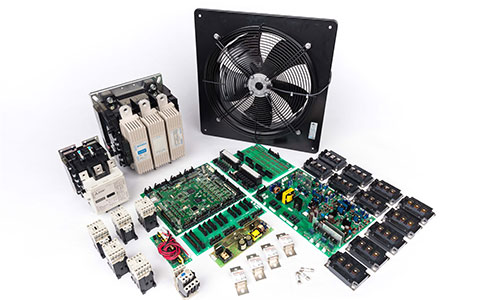BLOG
BLOG
Developing a Spare Parts Strategy
JUNE 1, 2022
Spare parts management can support several business strategies and objectives; however, its complexity can be daunting given the litany of factors that influence a business’s strategy. Maintaining sufficient spare parts is critical to supporting a growing installed base of products.
It is imperative not only to maintain sufficient inventory, but to supply these items in a timely manner for efficient resolution of customer issues.
The current supply chain disruptions, which businesses across various industries around the world are facing, requires flexibility and strategy to be as proactive as possible given the variable lead times.
Every business has their own spare parts strategies specific to their capabilities, capacity, products/services, etc.
At Mitsubishi Electric Critical Power Solutions, we take a proactive approach by housing a wide variety of spare parts that are used as part of preventive maintenance. This includes not only spare parts, but common items needed to maintain our equipment’s operation and additional parts that support product lifecycle management.
But how do we know the optimal level of safety stock to maintain?
Often, stock levels are based on historic, numeric data over various time periods, which are then analyzed to identify trends in demand.
Due to our increasing install base of products, any persistent part issues that may need to be brought to our Quality Department’s attention will be identified during the trending process.

Given the volatility of today’s supply chain landscape, this trend analysis is also paired with a thorough examination of current lead times for each spare part so that an appropriate quantity is purchased and delivered to meet projected usage.
Safety stock is reviewed monthly considering usage, lead time, deviation from previously set stock levels, and any other additional customer needs or internal initiatives.
Additionally, any information on part obsolescence and replacement provided by our Product Managers or Engineering Department is considered to set stock levels, which includes both quantity and cadence. This reviewal process triggers the appropriate purchasing activities.
In addition to determining the type and quantity of spare parts needed, the speed in which a customer can obtain spare parts is also taken into consideration.
Spare parts are stored at our warehouse in Warrendale, PA and strategically located across the country in additional warehouses.
Mitsubishi Electric provides customers the option of purchasing a spare parts kit, which contains the most common parts needed to resolve most issues.
These kits allow the customer to have parts on hand, expediting issue resolution without exposure to any potential lapse in stock.

Approaches and strategies to maintaining spare parts vary significantly from business to business. At Mitsubishi Electric, we are avidly and consistently examining supply chain trends, and communicating with our vendors to meet our customers’ expectations.
If you have any additional questions regarding spare parts or to get a quote, please Contact Us and select "Service & Support" and further explain your inquiry in the Comments section on the form.
Edited by Nicole Kristof, Digital Marketing Specialist
Stay up-to-date on industry trends & insights
Be the first notified of new blog posts
By submitting this contact form, you agree that a representative(s) of Mitsubishi Electric Power Products, Inc. (MEPPI) may contact you using the information you provided. In accordance with our Privacy Policy, we will never share or sell your personal data.